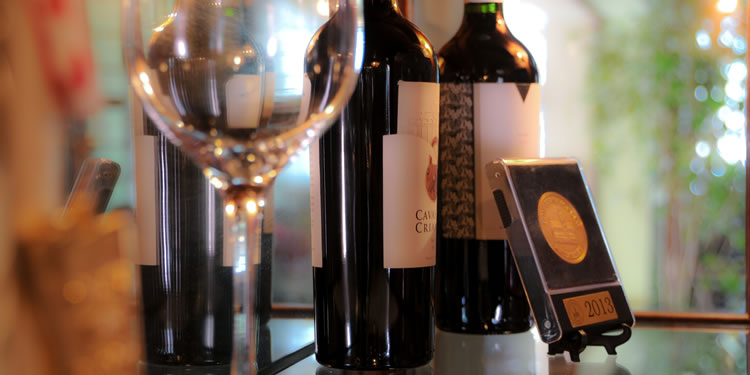Located in the southern end of the American continent, Patagonia meets several natural conditions and characteristics ideal for growing vineyards. Pure air, clear skies and endless silences are only interrupted by the whispers of the winds that cross the area from the Andes Mountain Range to the Atlantic Ocean, carrying the mysterious aromas of the bushes and the wild berries.

Its weather -which has a great amplitude of temperatures in the vine stage of ripeness-, the conditions of the soil -with rocky and alluvial corners-, the excellent phytosanitary conditions, the remarkable luminosity, the scarce rainfall and the low humidity favor the consolidation of the Patagonian winemaking industry within the international scope.
These features, along with the obsessive observance of their makers, give origin to wines with balance between their sugar content and the acidity of the fruit, thus making white wines with a delicate varietal expression and red wines with intense colors, fruit aromas and delicious taste in the palate: all of them with an authentic and well-defined personality.

Known as wines from cold areas, their production is concentrated in the Negro River and the Colorado River valleys. White vines -such as the torrontés from La Rioja, the torrontés from San Juan, the Pedro Ximenez, the semillón, the sauvignon and the chening blanc- and red vines -such as the malbec, the merlot, the syrah, the pinot noir, the cabernet sauvignon and the bonarda have become adapted to the area.
However, there is still a long way to go. The history of winemaking in Argentina, and especially in Patagonia, is quite young. Technological advances, investments and some businessmen with a good forward-looking approach carried out a determining transformation between the 42º and 39º southern latitude.
For this new stage, it is necessary to know all and every secret hidden in the Patagonian wines. Secrets and mysteries here unveiled... Cheers!

It is known that the grapevine is not from America, but it was brought during the colonization period. Bartolomé de Terrazas took it to Cuzco –Perú– in 1536 and then Hernando de Montenegro would have taken it to Lima and from there to Chile. By 1551, grapevines were grown in the trans-Andean city. Soon afterwards, time made the vine seeds cross the mountain range and enter Argentina. In 1556, it was noticed that the area of Cuyo had all the necessary ecological conditions for the development of the vineyards. Ever since, the Provinces of Mendoza, San Juan and La Rioja have been the cultivation area par excellence. The cultivation of Creole vines was predominant, although vine growers were enthusiastic about the cultivation of varieties introduced from Europe. Wine bibliography usually mentions agronomist M. Pouget, as he was the one who entered most European vines in the country, in compliance with President Sarmiento's policy on this field. As time passed, after losing the fear for some plagues that hit the area, searching for better soils and doing several experiments with grafts, the vine began to descend latitudes, thus entering the Patagonian region. Today, a growing and modern proliferation of wineries located in the Provinces of Neuquén and Río Negro produce excellent worldwide-known wines.